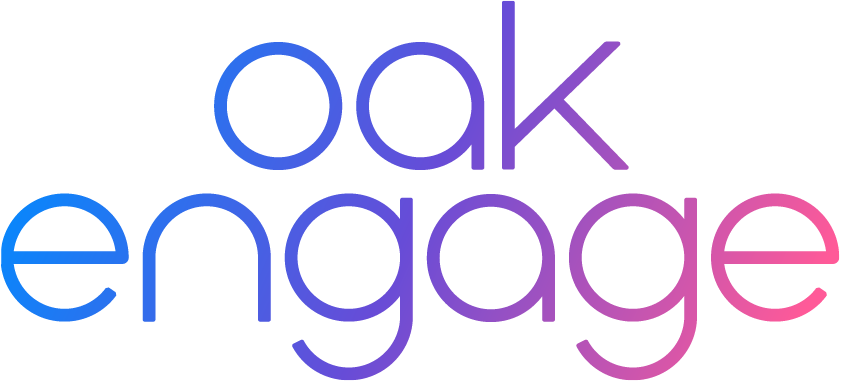Sometimes, through no fault of our own, we work with or have to manage difficult employees who are disengaged or disruptive. These people are often outspoken and look for the negatives in all aspects of work. Managers and leaders must be able to tackle this behaviour head on to avoid large scale impact on team morale, job satisfaction and individual wellbeing at work. Knowing how to manage difficult employees sensitively and effectively is key, so we’ve highlighted the best ways to do so in this article.
The data doesn’t lie
We have vast research of our own into toxic behaviours in the workplace, accompanied by expert guidance and actionable insights on effectively dealing with difficult employees. The most alarming statistics were when respondents revealed they had been subjected to the following at work:
-
Feeling belittled in front of other employees (56%)
-
Bullying in the workplace (42%)
73% of individuals in our research agreed that a toxic workplace culture has contributed to their burnout. Toxic behaviours can impact from far and wide across a business, whether it’s a toxic manager, difficult teammate or a highly disruptive or disgruntled colleague working in the same space. Recognising such behaviours and addressing them before they escalate is crucial to carefully dealing with difficult employees.
The impact of difficult employees on operational performance
It’s one thing having a disgruntled employee who refuses to put the work in. When the behaviour of this individual affects the performance of others in their team and across the organisation, it becomes even more cause for concern. It can hugely impact the company culture, which often takes years to build and nurture.
The participants in our Toxic Workplace research believed that a negative organisational culture affects employee retention (67%), overall happiness of employees (63%), productivity (54%), employee attendance (43%) and collaboration (39%).
Why are these employees acting out of turn?
To know how to manage difficult employees, you first need to understand what is affecting them.
A few examples of triggers for difficult behaviour:
-
Resistance or fear of change
-
Language barriers, feeling excluded
-
Unwilling to take responsibility for their actions
-
Failure to take on feedback, feeling attacked
-
Boredom and lack of motivation
Understanding how to manage difficult employees
Each organisation should have their own policies and procedures in place which outline acceptable working practices. Organisations should also provide opportunities for two-way communication with managers when employees are struggling or do not feel like they are getting the best out of their role or employer.
Revisiting our above examples of triggers for difficult behaviours, here’s how you can effectively utilise internal comms and workplace tech to manage difficult employees and even stamp out resistant behaviours before they become a bigger problem.
Resistance or fear of change
Whether you’ve been at a company for 2 years or 20 years, you will have learned ways of doing your job that become second nature. Equally, if management has been the same for a long while, it becomes the norm and everyone gets used to it.
The moment some kind of change is announced, whether it’s to do with day-to-day roles or the bigger picture of the company, it’s bound to unsettle those who don’t like change.
The key to overcoming this is to ensure that information is cascaded throughout the process of change. Treating people as adults with access to information and reasons for such change will help them to rationalise the reasons for it.
Imagine a senior leader you’ve never met sending a mass email about a major software change. It would likely cause panic, especially if the leader seems disconnected from the team and the tech that they use. Whereas, if a department head who understands the team’s challenges communicated the change with proper training, it would be much better received.
Alternatively, how would you feel if you found out that your company was being acquired by another company via a LinkedIn post or on the news? This sort of behaviour does not put the colleague first and so a proper communications plan that straddles both internal and external stakeholders is crucial for retaining the trust and respect of colleagues throughout processes of change.
Personalised communications through your company intranet can ensure that the right teams see the right information at the right time.
Failure to take on feedback, feeling attacked
Usually, a one-to-one or yearly review is filled with positivity, optimism and praise for colleagues. There will be times when some less positive feedback needs to be shared in order to plan how to improve on it.
Having robust processes for appraisals that both managers and employees should follow will ensure that there is uniformity in how they are approached. Doing so will also encourage constructive feedback where actionable goals and objectives can be set for individuals, rather than taking a negative approach to performance.
Employees should be able to quickly find what they need or who they should speak to if they are having problems, whether that’s related to their role or if there are external factors of life affecting their attitude and behaviour at work.
While HR should create processes for appraisals, these resources should be amplified by internal comms teams, especially in the run-up to appraisal periods.
Supporting articles about taking time to prepare for appraisals and reminding people of the process will reinforce the structured approach to giving and receiving feedback.
By doing this, individuals are less likely to feel targeted or attacked and will enter into such meetings calmly, with a willingness to listen to feedback and set new goals. This can create a culture of continuous improvement and personal development.
Overcoming boredom and increasing motivation
Cultivating a strong company culture isn’t something that can happen overnight. By taking small steps to improve day by day, month by month, you will see the impact that it can have on employee motivation and satisfaction over time.
Putting your people first is key. When your people aren't working to the best of their ability, quality drops, standards slip and workload piles up for other colleagues who have to pick up the slack.
Two way communication between colleagues and managers, such as social timelines and community spaces, will help to create connections and form new friendships across the company, regardless of location. They can give colleagues a new lease of life, an opportunity to reignite old hobbies or find people that they can chat about sports or music with. For example, providing an interactive and engaging aspect to the workplace experience. It can also help to identify any brewing issues which can be addressed either individually or within a team meeting, to bring everyone back on track.
Showing appreciation for colleagues is a quick win when it comes to increasing motivation at work. From a small gesture to a big helping hand, showing recognition and sharing thanks for support will bring more positivity to your team and help give colleagues an opportunity to shout about their great colleagues for all to see.
Overcoming language barriers and accessibility challenges
When working for a multinational or global company, it’s likely that the majority of updates will be shared in the language that those at Head Office speak. A misunderstanding or a failure to engage with content in other languages could lead to disengagement which could make certain colleagues difficult to work with or manage, especially if they don’t understand or won’t comply with new rules.
Don’t forget your frontline or deskless workers or staff based in other countries. If they do not have a good grasp of the main language used in company comms, you can’t be certain that they fully understand important company news and updates.
Implementing automatic translations into a wide range of languages will see engagement with company communications grow. Colleagues across the world will feel seen, valued and respected. Most importantly, messages will be easy for them to understand and they can take learnings and information forward into their day to day role.
On the topic of accessibility, when you are posting video content on your intranet, be sure to include subtitles. Remember that staff want to watch a video on their commute or in the staffroom, but if they have a hearing impairment, or even if they don’t have headphones, there needs to be another way for them to access the information. Adding subtitles will help with this, and even better if the subtitles can be translated into the user’s preferred language.
Taking responsibility for one’s actions
By creating a company culture where everyone’s ideas, suggestions and feedback is listened to and appreciated, your people will be more likely to take ownership of projects, actions and tasks.
Reminding your people that they are part of something bigger will reinforce the value and importance of their role within the company. By introducing a modern intranet, you can provide visibility across your whole organisation so that each team understands the impact they have on the bigger picture. With a huge majority of the global workforce working in deskless roles, there is often little opportunity to interact with people in other roles or across different sites. Using tech to forge connections can empower people to share their team successes with others, celebrate the wins from their teams and congratulate others on their successes too.
Connectivity leads to increased engagement and when people feel proud of the work that they do, they’re more likely to take responsibility both for the wins, but also the learnings along the way.
Managers need to address areas for improvement carefully so as not to disengage team members, but to empower them instead.
How Oak can help you manage difficult employees
By providing the tools to help your employees work more efficiently, connect with their colleagues and to realise the value in the work they do, you can nurture a culture that celebrates the small and the big wins.
Oak Engage has all the tools you need to create a digital workspace that your employees will use, respect and value, no matter where they are
-
Motivate them with employee recognition opportunities
-
Connect them with social and community features
-
Make sure they understand your comms with accessibility options
-
Filter out negativity or profanities with conversation management
The first step in managing difficult employees is to understand what is affecting them. Knowing what is disengaging or demotivating them can empower you to refresh your approach to company communications to foster an inclusive, supportive and engaging workplace experience for all.
Change the way you work. Empower your people
We offer a free and personalised demo service, showcasing our intuitive and easy to use platform.


